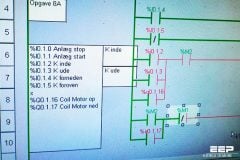1st part | 2nd part | 3rd part

Household Circuit Wirings
The list of the next ten household circuit wirings:
- Double receptacle circuit with shared neutral wire (receptacles alternate circuits)
- Double receptacle small-appliance circuit with GFCIs & shared neutral wire
- Double receptacle small appliance circuit with GFCIs & separate neutral wires
- 120/240V range receptacle
- 240V Baseboard heaters, thermostat
- Dedicated 120v computer circuit, isolated-ground receptacle
- 240V appliance receptacle
- Ganged single-pole switches controlling separate light fixtures
- Ganged switches controlling a light fixture and a vent fan
- Three-way switches & light fixture (fixture between switches)
11. Double receptacle circuit with shared neutral wire (receptacles alternate circuits)
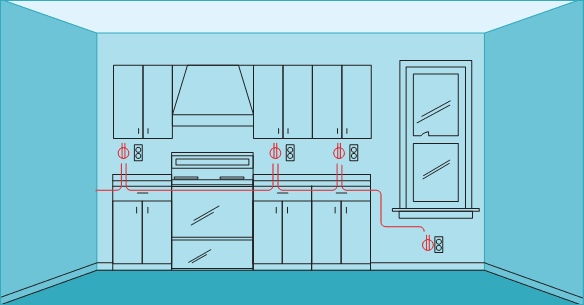

This layout features two 120 V circuits wired with one three-wire cable connected to a double-pole circuit breaker. The black hot wire powers one circuit. The red wire powers the other. The white wire is a shared neutral that serves both circuits.
Remember to use a GFCI circuit breaker if you use this circuit for kitchen counter top receptacles.
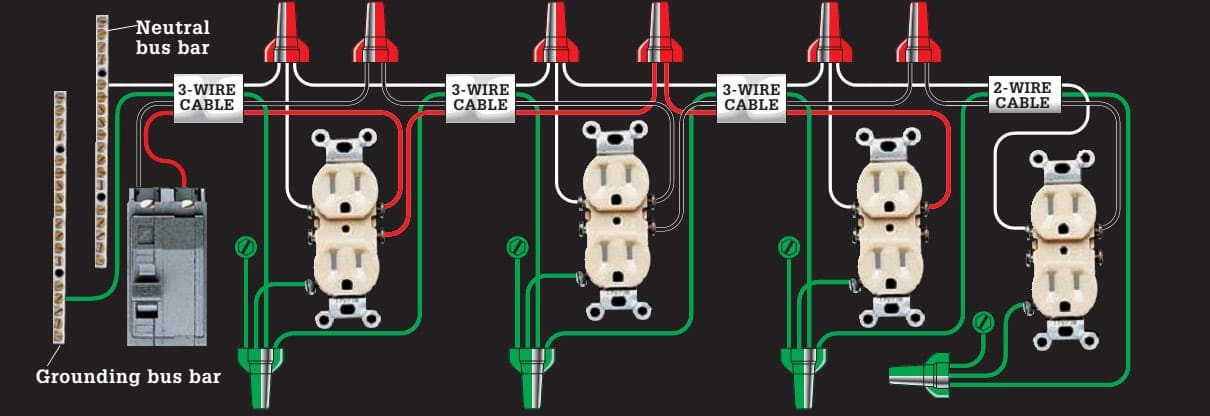

12. Double receptacle small-appliance circuit with GFCIs & shared neutral wire


Use this layout variation of circuit wiring 10 to wire a double receptacle circuit when code requires that some of the receptacles be GFCIs. The GFCIs should be wired for single-location protection (see circuit wiring 2).
Requires three-wire and two-wire cables.


13. Double receptacle small appliance circuit with GFCIs & separate neutral wires


If the room layout or local codes do not allow for a shared neutral wire, use this layout instead. The GFCIs should be wired for single-location protection (see circuit wiring 2).
Requires two-wire cable.
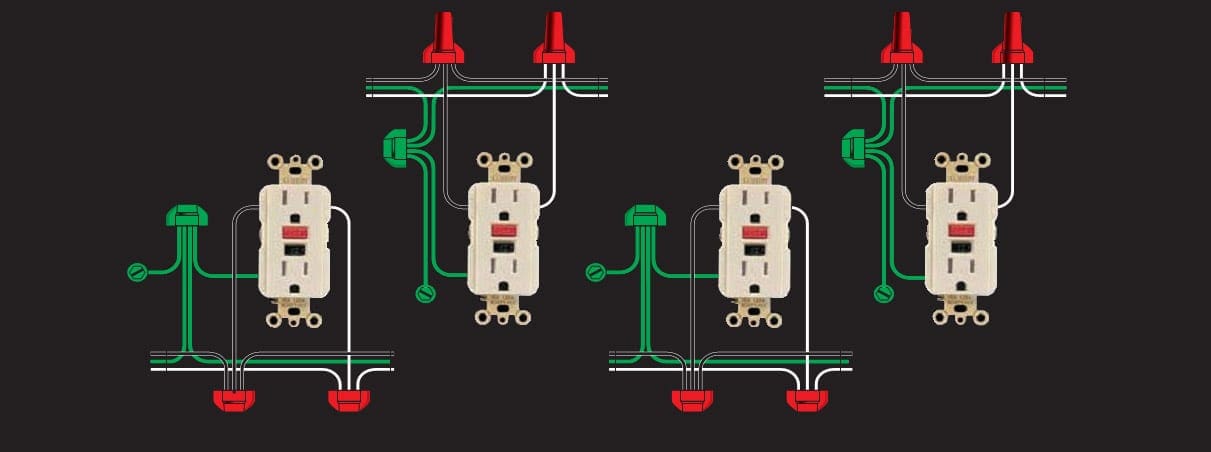

14. 120/240V range receptacle


This layout is for a 40- or 50 A, 120/240 V dedicated appliance circuit wired with 8/3 or 6/3 cable, as required by code for a large kitchen range. The black and red circuit wires, connected to a double-pole circuit breaker in the circuit breaker panel, each bring 120 volts of power to the setscrew terminals on the receptacle.
The white circuit wire attached to the neutral bus bar in the circuit breaker panel is connected to the neutral setscrew terminal on the receptacle.


15. 240V Baseboard heaters, thermostat


This layout is typical for a series of 240 V baseboard heaters controlled by a wall thermostat. Except for the last heater in the circuit, all heaters are wired as shown below. The last heater is connected to only one cable.
Requires two-wire cable.
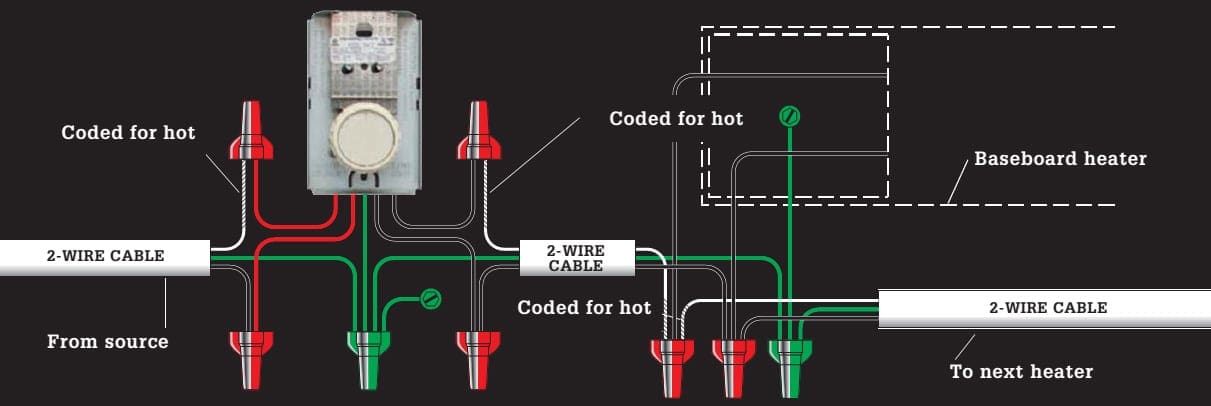

16. Dedicated 120v computer circuit, isolated-ground receptacle


This 15 A isolated-ground circuit provides extra protection against surges and interference that can harm electronics. It uses 14/3 cable with the red wire serving as an extra ground ing conductor. The red wire is tagged with green tape for identification.
It is connected to the grounding screw on an isolated-ground receptacle and runs back to the grounding bus bar in the circuit breaker panel without touching any other house wiring.
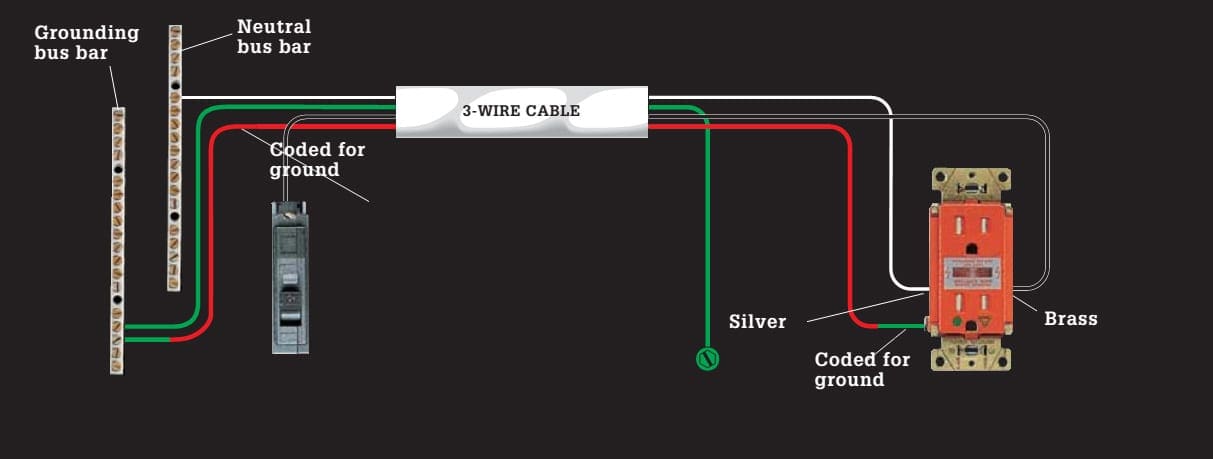

17. 240V appliance receptacle
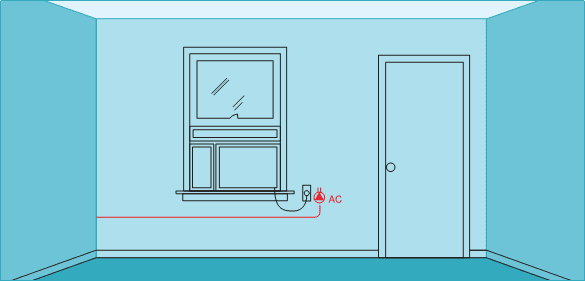

This layout represents a 20 A, 240 V dedicated appliance circuit wired with 12/2 cable, as required by code for a large window air conditioner. Receptacles are available in both singleplex (shown) and duplex styles.
The white wire is tagged with black tape to indicate it is hot.
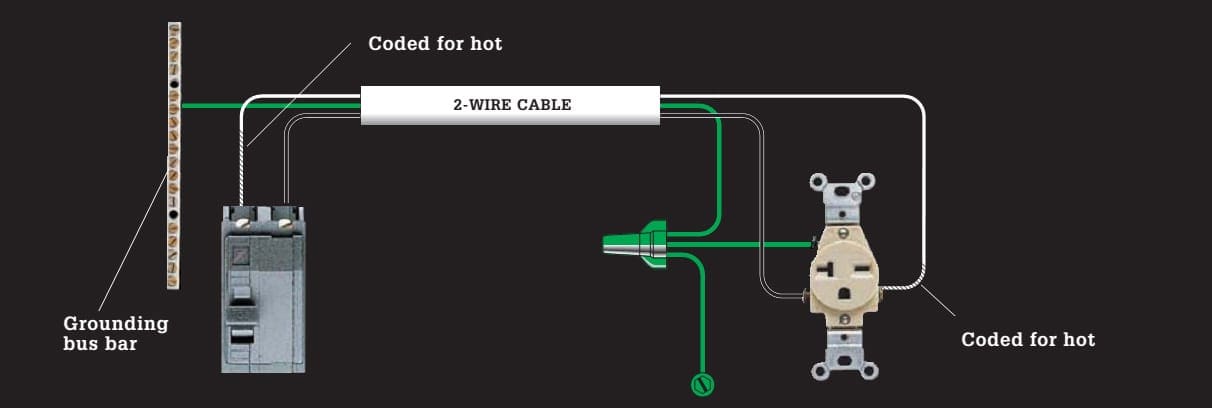

18. Ganged single-pole switches controlling separate light fixtures


This layout lets you place two switches controlled by the same 120 V circuit in one double-gang electrical box. A single-feed cable provides power to both switches. A similar layout with two feed cables can be used to place switches from different circuits in the same box.
Requires two-wire cable.
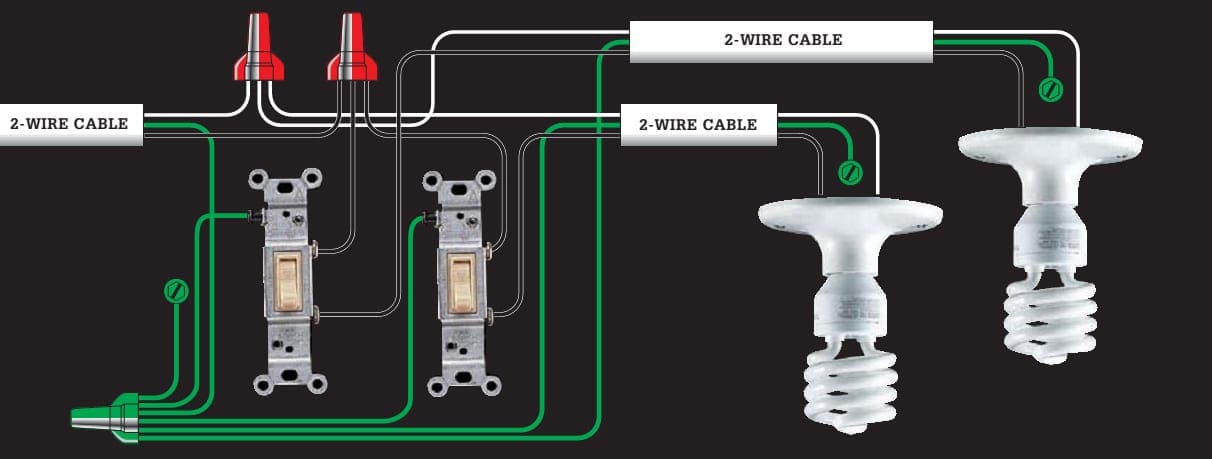

19. Ganged switches controlling a light fixture and a vent fan
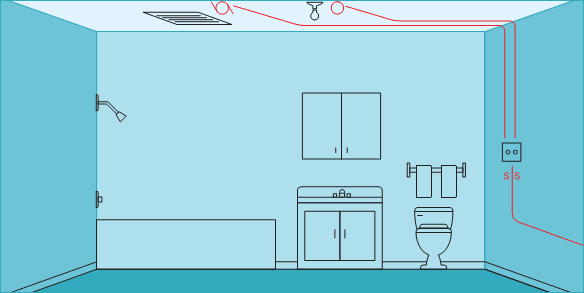

This layout lets you place two switches controlled by the same 120 V circuit in one double-gang electrical box. A single-feed cable provides power to both switches.
A standard switch controls the light fixture, and a time-delay switch controls the vent fan.


20. Three-way switches & light fixture (fixture between switches)
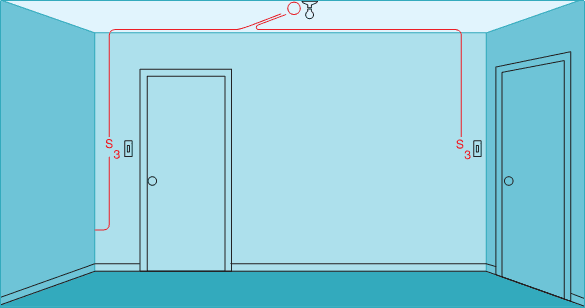

This layout for three-way switches lets you control a light fixture from two locations. Each switch has one common screw terminal and two traveler screws. Circuit wires attached to the traveler screws run between the two switches, and hot wires attached to the common screws bring current from the power source and carry it to the light fixture.
Requires parallel runs of 2-wire cable.


1st part | 2nd part | 3rd part
Reference // The Complete Guide to Electrical Wiring (Current with 2014–2017 Electrical Codes) – Black+Decker








